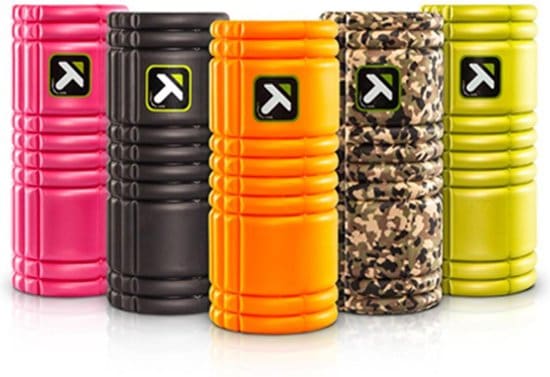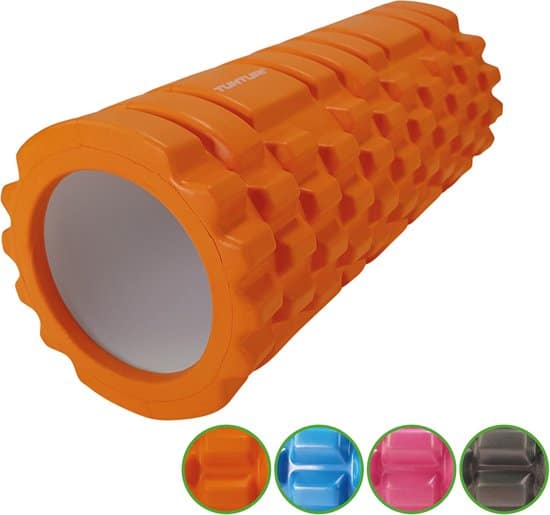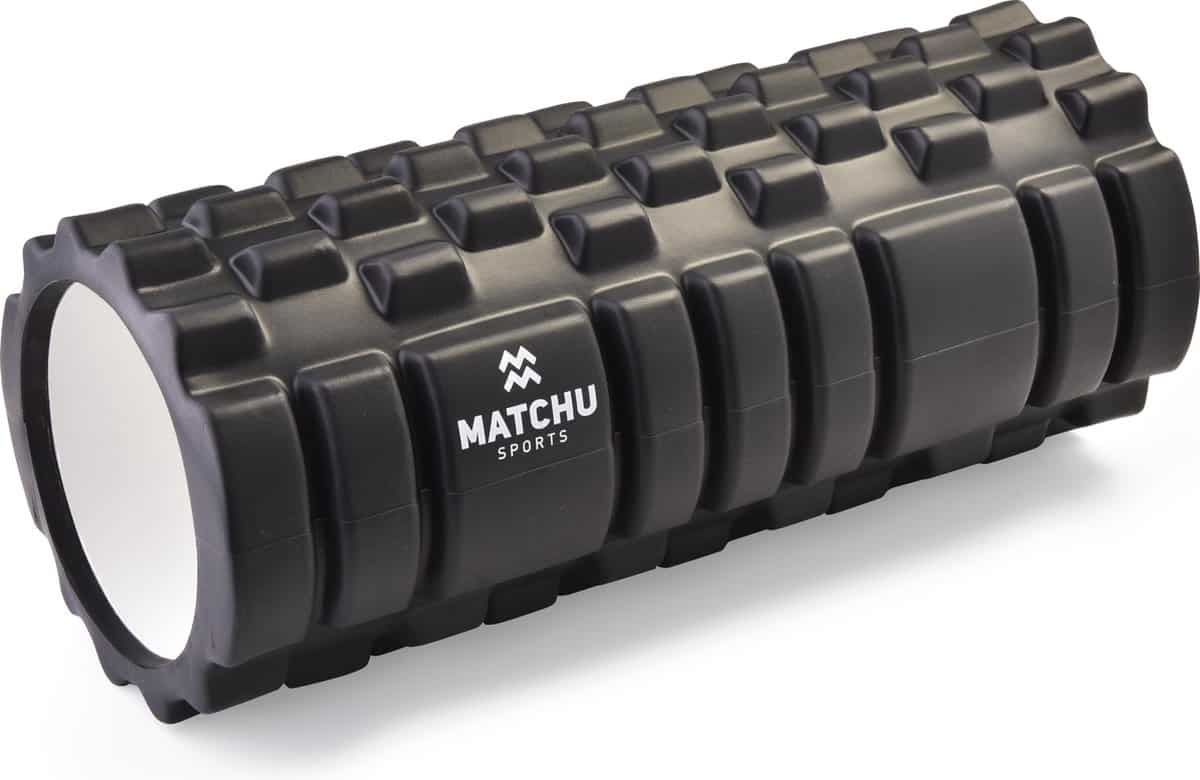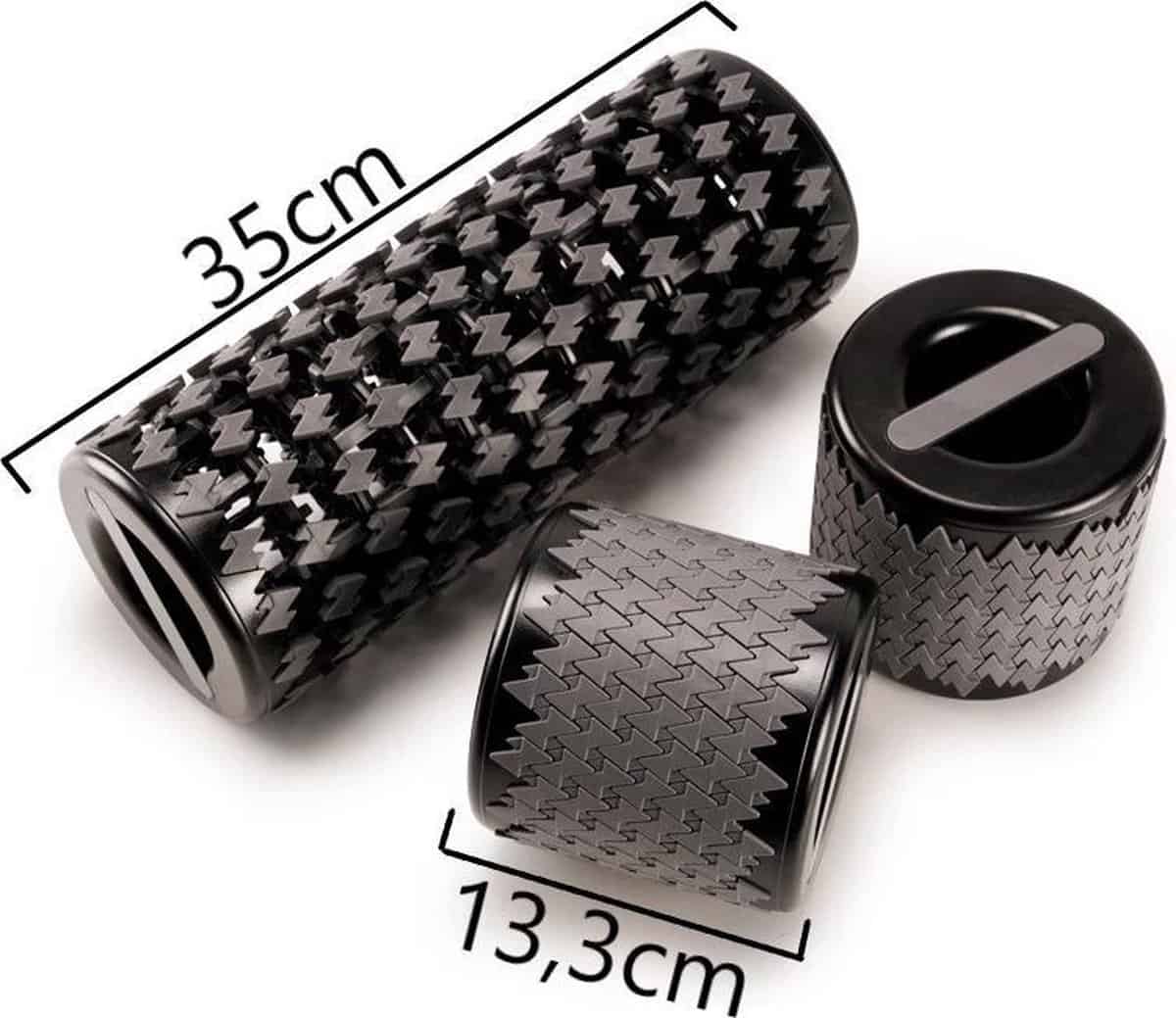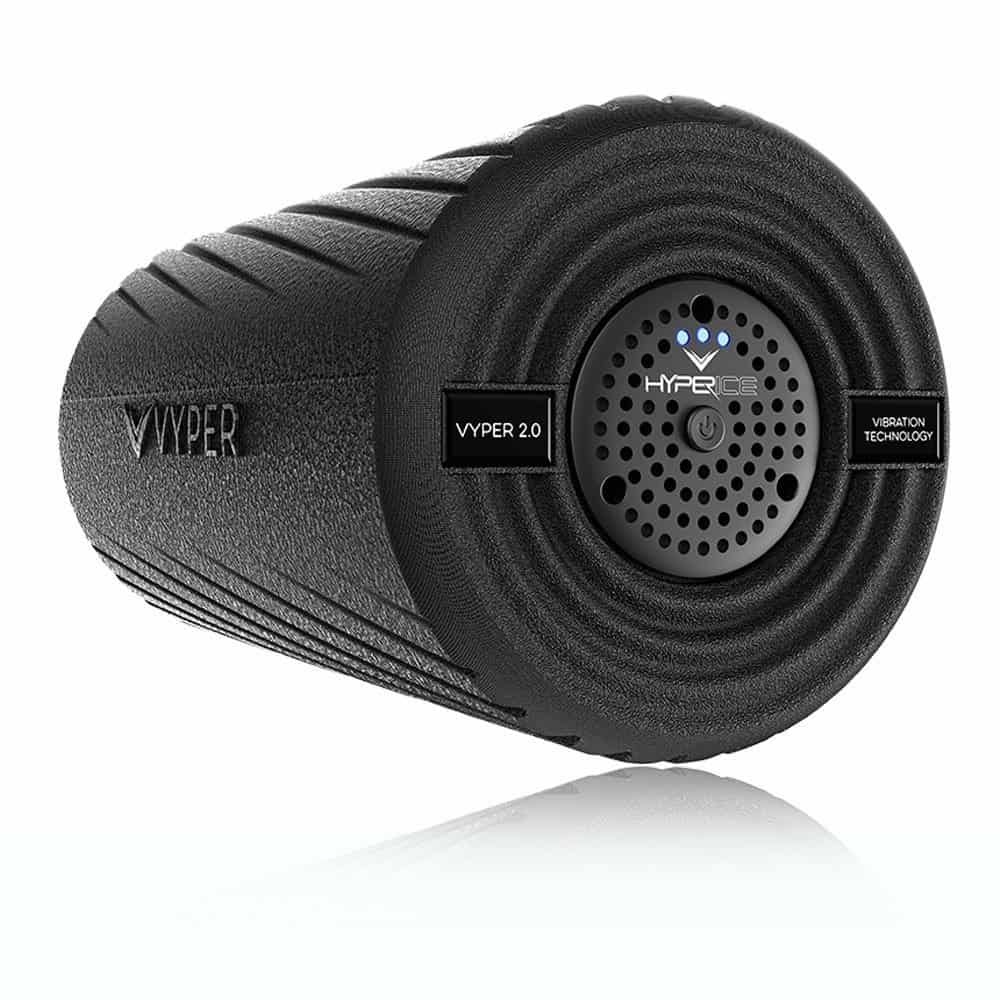I enjoy writing these articles for my readers, you guys. I don't accept payment for writing reviews, my opinion on products is my own, but if you find my recommendations helpful and you end up buying something through one of the links I may be able to receive a commission on that. More information
If you're not already using a foam roller, you should definitely get started.
Foam roller technique is fairly easy to learn and foam rollers can help improve your flexibility and strength and speed up muscle recovery.
It's the kind of thing that feels annoying when you do it, maybe hurts a little, but you look forward to doing it all day long to give you that feeling of "openness" in your muscles.
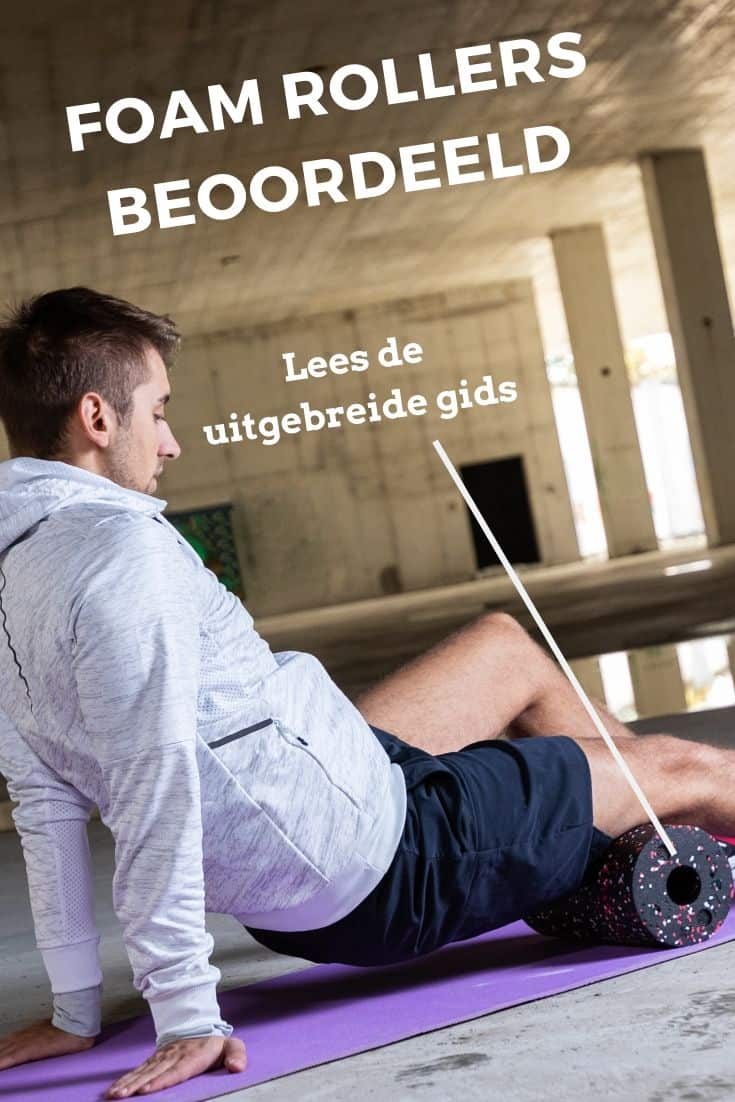
There are so many people that I hear wish they had discovered this years ago. And whether you do a lot of strength training and want to recover faster, or sit behind a desk and get a stiff neck.
Rolling on your soft tissue does wonders for how you feel.
But unless you want to use the grubby free-for-all rollers at your local gym, you should probably invest in your own roller.
So: Which of the approximately 10.348 foam rollers on the market should you buy?
We choose this selection of The Grid foam rollers. This will become your go-to roller once you get into it, but is also a great entry point for beginners.
Here are some exercises you can do with it:
We'll cover further down to the rollers, but also a few more that are perfect for specific situations.
| Foam roller | Images |
|---|---|
| Best foam roller for advanced users: GRID from TriggerPoint |
|
| Best cheap foam roller: Tunturi Yoga Grid |
|
| Best fitness roller for running: Matchu Sports |
|
| Best foam roller for travel: Movedo foldable |
|
| Best vibrating foam roller: VYPER 2.0 from Hyperice |
|
| Best hand foam roller: Trigger Point The Grid STK |
|
What we discuss in this comprehensive post:
- 1 How do you choose a foam roller?
- 2
- 3 Who is foam rolling intended for?
- 4
- 5
- 6
- 7
- 8
- 9 What about vibrating foam rollers?
- 10
- 11
- 12
- 13
- 14
- 15 Top 6 Best Foam Rollers Reviewed
- 15.1 Best foam roller for advanced users: GRID from TriggerPoint
- 15.2 Best Cheap Foam Roller: Tunturi Yoga Grid
- 15.3 Best Fitness Roller for Running: Matchu Sports
- 15.4 Best foam roller for travel: Movedo foldable
- 15.5 Best Vibrating Foam Roller: VYPER 2.0 from Hyperice
- 15.6 Best Hand Foam Roller: Trigger Point The Grid STK
- 16 The basics of myofascial release
How do you choose a foam roller?
There are three factors to consider when buying the perfect foam roller:
- density
- format
- texture
The main characteristic is density. A denser foam roller provides better compression of muscle knots, which can provide better release.
However, if you're new to muscle rolling or unable to tolerate large amounts of compression (or pain/discomfort), you probably won't be able to apply the compression long enough to achieve "muscle relief," so beginners should choose a less dense roll.
Once you've chosen the density, you can move on to the size and texture.
The sizes of a foam roller
Foam rollers come in different sizes, but you're really looking at two categories: longer (minimum 3″) or shorter (less than 2″).
- Larger rollers can be used to roll out larger muscles such as quads, hamstrings and calf muscles on both sides at the same time
- Smaller rollers are better for targeting smaller areas (plus they're easier to travel with too because they're, well, smaller)
The texture of your foam roller
For texture, you also have (essentially) two categories, smooth and texture:
- Smooth rollers apply pressure evenly over an area
- Structure rollers can put more pressure on specific points in your muscle. This can be good if you want a deeper muscle relaxation, and not so great if you don't like pain.
Newcomers should choose smooth rolls and work their way up to texture, if they want to, but veterans shouldn't feel that texture is a necessary step – it's really more about preferences.
Who is foam rolling intended for?
Foam rolling is for almost everyone.
It is a technique of self-myofascial release (SMR), or self-massage, to lengthen the fascia covering the muscles, which, when restricted, can cause muscle strain and adhesions (knots).
That's what you suffer from with stiff muscles.
Simply put, a foam roller is the masseuse for the arms, and not the arms as in your arm muscles, but as in people who do not have enough money to go to a masseur often.
By targeting muscle groups and using both gravity (the placing of the muscle on top of the roller) and friction (the rolling motion), you can effectively loosen tight tissue.
- anyone who sits a lot (the fascia can tighten because you sit too long),
- anyone who moves a lot (the fascia can settle in a resting state after being used a lot), and
- anyone who likes to do strength training (the fascia can tighten in response to overwork, and can also be tense in other places to compensate for muscles that have been overworked).
What about vibrating foam rollers?
Compared to our top pick, the vibrating foam rollers we tested are all smaller and more expensive.
In the past few years, several vibrating foam rollers (equipped with battery-powered motors) have appeared on the market, at rising prices.
But so far we've found that for most people they don't live up to what you want to do with them and it's more of a hype.
Unless you want to work intensively as a top athlete.
However, the effects of adding vibration to SMR remain largely unstudied. Subjective reviews have suggested that vibration may aid recovery and/or reduce discomfort while rolling.
I can't tell you it's going to help, but people have tried it and mostly like it or feel more like it helps.
When people enjoy the vibrating sensation, they are more likely to roll longer and more often, which can enhance the therapeutic effects of the self-massage.
Top 6 Best Foam Rollers Reviewed
Now that you know what to look for, let's move on to the next step, our review of the best foam rollers:
Best foam roller for advanced users: GRID from TriggerPoint
The GRID foam roller from TriggerPoint is an excellent choice if you roll regularly.
This 13″ hollow roller is made of PVC pipe wrapped in textured EVA foam, so it's sturdier than a "traditional" high-density foam roller and extra durable, falling into the hard foam roller category.
The exterior of the foam has different textures and density zones, allowing you to really focus on different problem areas.
Furthermore, they have a lot of training information and even a whole video library to help you get the most out of the rollers.
If you need a roller larger than 33cm you can buy the 66cm GRID 2.0 and if you like pain and have a body made of steel the 33cm GRID X is the one for you, twice the strength like the regular GRID.
This is the classic roller that is the top choice for many gyms and athletes and the different options of sizes and textures really allow you to choose the type of roller here.
Best Cheap Foam Roller: Tunturi Yoga Grid
Tunturi's medium density roller is soft enough to keep you rolling, yet firm enough to provide decent muscle relaxation even after you get used to the pain of self-myofascial release.
It certainly falls into the soft foam roller category.
A larger roller is harder to store and carry, but it gives you the versatility to roll out your entire body or focus on smaller muscle groups.
This roller is probably not your favorite roller when you start doing more with it and you know better where your preferences lie.
It is available in 33 cm or 61 cm.
Eventually you'll probably want to move up to something firmer, but it's a great place to start, and it's not so soft that you'll instantly outgrow it like some entry-level models.
Best Fitness Roller for Running: Matchu Sports
A foam roller doesn't have to be expensive. After all, it's just a cylinder of foam (or, well, foam-like material).
The high-density MAtchu foam roller is made of sturdy, durable, molded polypropylene, which has a light surface texture, so it is not too slippery and falls into the hard foam roller category.
It probably won't give you style points, but at 33 cm it is big enough for all your sports essentials and hard enough to target your stiff muscles and range of motion with better blood flow.
What else do you need to get started or as a spare roller?
Best foam roller for travel: Movedo foldable
You train when you travel, right?
Well, you should at least start rolling when you stay in your hotel room.
The Movedo foam roller features an innovative hexagon shell that easily converts this fully functional roller with a cylinder diameter of 5,5″ into a (relatively) slim and easy to pack roller and is a soft foam roller.
The Tiguar is 35cm long which is long enough to slide over your back and engage most of your major muscle groups and it is really high quality.
It can be folded to only 13,3 cm and so it fits easily in your suitcase.
Best Vibrating Foam Roller: VYPER 2.0 from Hyperice
Hyperice's intense (and expensive) vibrating foam roller is what the pros use.
The good news is that, thanks to the vibration, which warms up your muscles and reduces the pain of regular non-vibrating self-myofascial release, the VYPER 2.0 is mild enough to use even if you've never rolled before. (You don't even have to roll – just the vibration helps muscle recovery).
The VYPER 2.0 isn't the only vibrating foam roller on the market, but it's the most intense – the exterior isn't made of foam, it's made of a special air-injected plastic that amplifies the vibrations rather than absorbs them (as foam would to do).
It has three vibration speeds and a high-capacity rechargeable lithium battery that lasts up to two hours, but isn't the best for tight budgets.
Check the most current prices and availability here
Best Hand Foam Roller: Trigger Point The Grid STK
Rolling on the floor with a foam cylinder may not be for you, but that doesn't mean you can't get some benefits with another tool, such as a smaller, thinner massage roller like The Grid STK.
This type of roller functions like a rolling pin. You grab the handles with your hands and roll out the muscles with your arms and upper body.
Slim rolls like the STK are more precise and allow you to better regulate the amount of pressure in a particular spot, and can be ideal if you are unable to get into some of the positions required for normal foam rolling.
They are also significantly easier to travel with and take up even less space than the Tiguar.
However, because you need both hands to work with these pins, they are usually only useful for your lower body unless you have someone else who can roll out your upper body muscles for you.
The basics of myofascial release
With a foam roller you use your own weight + gravity to adjust the intensity level during your foam roller session and ensure better blood flow by going back and forth over the hard surface.
This ensures that your muscles are released and is perfect for a warm up or cool down during exercise.
Here are just a few ways you can use a foam roller to work on sore hamstrings after a long walk or to release tension after a long day at the office.
The best thing about a foam roller is that you can precisely adjust it to your own levels of tolerance and problem areas.
Now that you have this thing at home, what the heck are you doing with it? SMR is not complicated if you understand a few key concepts.
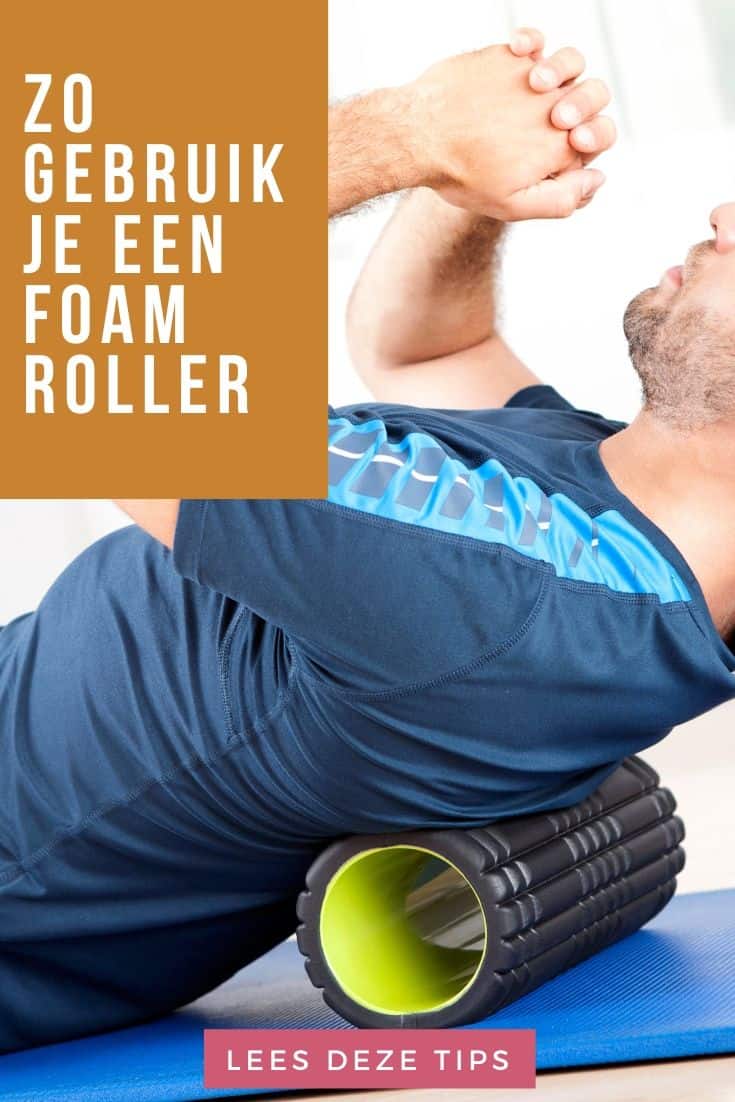
There are two main techniques you can use:
- rolling back and forth, causing friction and rolling pressure of the fascia
- holding still and pressure in a specific spot for trigger targeting to melt those hard-to-reach knots.
The other basic concept to understand: If you place yourself on top of the roller, by creating more gravity on a muscle, you can further intensify the massage.
This generally means looking at your body's contact points with the floor: the closer your hands or feet are to the roller, the more you can support your body and the less intense the muscle pressure on the roller. .
The less and farther apart the contact points are, the greater the pressure on the muscle you are rolling.
For example, when you roll out your hamstrings (back of the thighs), you can place both legs on top at the same time, which is less intense because the pressure is distributed between two legs.
You can also move the roller so that only one leg is on it and use the other foot on the floor (bent knee) to support some of your weight.
This gets more intense because your weight is supported on only one leg.
Or you can do one leg and keep your free foot all the way off the floor (intensify it), or even cross that free leg over the worked leg to add more weight and pressure (most intense).
Make a program with your foam roller
A typical method to make sure you hit all the major muscle groups is to work from the bottom up with the foam roller:
- start with calves
- than with hamstrings
- then glutes (sit on top of roller with one ankle crossed over opposite knee to grab one glute at a time)
- then flip to edit quads
- then do the sides of the hips to get the tensor fasciae latae (TFL) / iliotibial band (ITB)
- then lie over the roller on the middle back to grab the shoulders
Can you work your lower back with a foam roller?
It is generally not recommended to roll over the lower back as this can potentially aggravate disc problems.
Instead, lay the roller lengthwise so that it runs the length of your back and tilt your body from side to side to roll one side at a time, being careful not to roll over the spine itself.
Care and maintenance
Taking care of your foam roller doesn't have to be difficult. Store your large roller upright, somewhere out of direct sunlight (some foams can be broken down by UV light).
Do not wear clothes with zippers or buttons that could destroy the surface of the roller when you are rolling.
After use, wipe the roller with a damp sponge or antibacterial wipes and clean it with a cloth dipped in soapy water and rinse well from time to time (don't soak as some foams can absorb water and take a long time to set). to dry).
How we tested and chose
Our experts agree that a smooth 6-inch, 36-inch long roller is the best overall tool for SMR, as it is the most versatile for both larger and smaller muscle groups, and can be used as a support in your workouts.
While short rollers are the right solution for some parts of the body, you can only use long rollers to lie comfortably along their length to gently roll your back muscles or stretch the front of your body.
And in most cases, you want the sturdiest material you can tolerate to go as deep as possible. Some trainers I know use real PVC pipe and skip the foam altogether!
A bumpy, ridged, or otherwise textured roller can be good for targeting specific knots (known as trigger points) or for someone who wants to work even deeper.
And a handheld option that fits in a gym bag is great for its portability, as well as for smaller muscles like your neck or ankles, or for partner work, if you're lucky enough to have someone use the roller on you.
But because you can't physically exert as much pressure pushing with your arms as you can lying on a roller (ah, gravity!), the handheld is better as an additional aid and probably not the best as your primary roller.
Similarly, other implements, such as firm rubber balls or smaller rollers, are also available and well suited for very specific purposes, but due to their specificity we did not look at them for this test.
To choose the products we tested, I spent hours reading online descriptions and reviews and editorial recommendations from US websites.
I have also taken into account the reputation of companies for quality. Then I selected representative products of each of three types: large, smooth, large and textured and a hand-held one.
We rated each roller for:
- Size, including diameter, length and weight
- Density in terms of softness / firmness
- Surface texture
- Perceived durability
- Ease of Use / Rolling Power
- Intended and best use, and how well it achieves them
We also reviewed each for its best features, any shortcomings, and overall usability, both individually and ultimately as a group.
Read also all about sports watches to get even more out of your workout.


